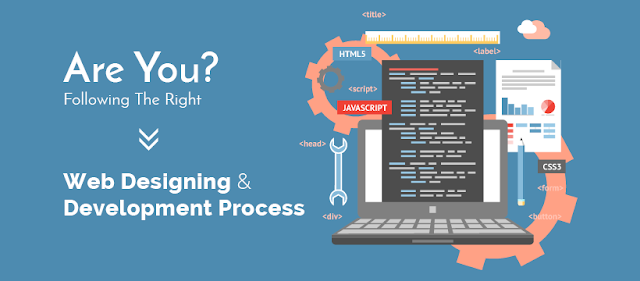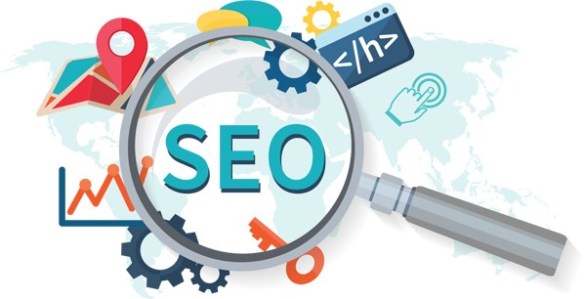Web design process - behind the scenes
The web design process
If a business needs a new website
or wants to replace its existing website, it usually redirects the project to a
recommended web design and development
services agency. It's a thoughtful move. After all, most companies
do not have the experience of tackling such a complex project whose bottom line
is critical to opening new horizons and generating product sales.
The creation of each website
follows a clear web design process. A customer who understands the basics of
this process will appreciate what's happening at each stage, and know exactly
when the process can easily change direction and communicate more effectively
with the web agency. The more you know, the more information is provided by the
web design team in their updates and is more useful and useful.
Why does web development take so long?
A new website will not be created
overnight. If a web development company estimates the deadline for creating a
new website, some customers may disbelieve.
Step 1: Brief
From the point of view of the web
design agency this is usually the first contact to the project or even to the
customer. This is generally also the most important step for both parties, as
everything we discuss here has an impact on the bottom line. For this reason,
the customer should ensure that the report is as clear and detailed as
possible.
The purpose of the report is to
submit a specific project definition to the web agency. The customer must
explain his or her activity, target audience, and website goals. Do you seduce
a young visitor with fascinating pictures and modern videos? Or, because of
your role, can you shop online without worrying about an average parent?
With the help of the agency, they
must set technical specifications. Should the website be optimized for a
specific resolution or browser? What kind of mobile version do you need? Would
an appealing design be enough?
Step 2: Planning
With the information contained in
the report, the web development company can move into the planning phase of the
project.
In this step, during the research
and brainstorming sessions, the team describes the first concepts and ideas on
the site that meet customer specifications.
Information architecture is an
important part of this. It essentially defines the structure of the content of
the website and the visitor's access to it. It also depends very much on short
data - is the customer for an infinite scrolling (think of Pinterest) or a web
design with minimal content below the fold? The agency must find a way to
gently guide the visitor through the site to take the desired steps - the
so-called funnel approach.
Once the hierarchy of
organization of the page has been established, the presentation of the content
of each page must be taken into account. By assigning the location and
operating all functions - such as the online booking form and the online
payment system - users of the website will be easier to use.
The web development company must
take the responsibility of clarifying the logic behind the navigation and
presentation proposed to the customer. On the other hand, the customer must
take the responsibility to carefully consider the proposed concepts. If
communication is weak at this point, the entire web development process will be
pointing in the wrong direction. If changes are needed, they can be easily done
at this time. However, if needed later, the time and expense is significantly
higher.
Step 3: Design
This is the phase in which the
place takes shape. The web designer now has all the data he needs to work on
the actual aspect of this project.
One of the first design tasks is
the selection of a suitable color set. The color palette is very important as
it sends an instant message to the site visitor. Bright, multi-color designs
are great for children's organizations, but financial institutions should
choose more subtle colors if they want to raise public trust.
The combination of logo and color
palette forms the basis for the visual identity of the company and influences
the perception of the brand by the visitors. Regardless of whether the images
are displayed in headings, cursors or in the background, the best web designs
use carefully selected graphics and illustration images to underline the
company's core message.
Visual elements such as buttons,
information areas and menu areas should be designed to complement the tone of
the website's voice - formal areas with clear outlines with traditional fonts
that are best suited for the adult audience, urban areas with major problems
sources. To appeal to young people.
Step 4: Development
Here we look behind the scenes to
convey the true "feel" of the site. The web development company must
now develop a website to meet all requirements identified in the planning
phase.
One of the main concerns of the
development team is to ensure that the website is designed to comply with all
relevant web and accessibility standards, including HTML, CSS, XML and XSL
standards.
The development of the website is
based on the choice of the appropriate framework. The frames are similar to the
predefined templates used to create custom websites by writing additional code
to get the final look and feel. They are available in a variety of computer languages,
including PHP and JavaScript.
Step 5: Deployment
The website has entered the final
testing phase, so it can be put online almost online. Final testing typically
focuses on functionality, performance, and security as the web company prepares
to deliver the final product.
Once this is done, the agency
will transfer the project to the customer's online server, where the website
will be accessible using the customer's domain name.
The launch phase is also a very
important task of the client: it should help the website design company to test
the quality control of the website and to determine the type of user experience
it offers. Customers often ask their employees to use the website and check if
they find any lost or broken content or broken links, and to verify that the
online forms are properly received.
Step 6: Maintenance
The last step in the web design
process is not known to everyone. Unfortunately, many customers believe that
launching the site should stop working with their web agency. The truth is that
the website design process never ends unless you are truly invested in your
online presence.
So what happens during the
maintenance phase? First, the web agency provides support and solves all the
problems that you or one of your users encountered during your visit in order
to get a satisfied audience.
See this HTML Pro





Comments
Post a Comment